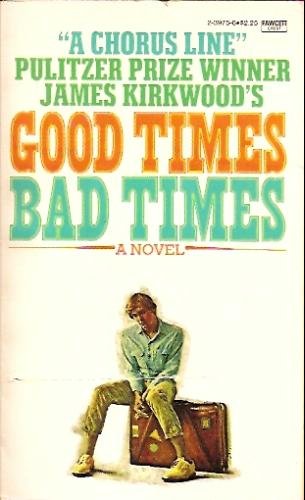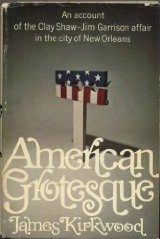
I just couldn’t stop thinking about the story and its protagonist, Peter Kilburn, who was recounting the events leading up to the murder in the form of a letter to his lawyer.
It was such a great story, I wanted to know more about the man who wrote it as well. Intrigued, I looked him up at the library—the Internet hadn’t been invented yet—and was immediately smitten. James Kirkwood, Jr. was a handsome former actor, the son of actors James Kirkwood Senior and Lila Lee, a silent film star. He was also a playwright as well as a novelist and a good thirty years older than me. Who cared? I was going to meet him and let him know I loved his book. So, I wrote him a fan letter, my first and only—typed, no computers then, either. I pored over this letter for days and had my friends at work read every word until it was perfect. I didn’t want him to think I was a crazed fan—the words “celebrity stalker” would evolve much later—just someone interested in his work. Then, I mailed it to his publisher with the request that they forward it to him. It went by snail mail and without the benefit of Google, which would have given up his personal details with a few clicks.
Evidently, his publishers complied, and within two weeks, I received a reply along with an invitation to visit him at his home in East Hampton should I be in the neighborhood. And, as it turned out, I would be. It was also my first time renting a summerhouse in the Hamptons.
I was very anxious about my upcoming meeting with this famous author. I changed my outfit three or four times and hoped I looked sexy rather than nervous. We arranged to meet at the East Hampton public tennis courts, and from there I followed him back to his home in the Springs, which overlooked the water. We sat on the deck and talked for hours, him regaling me with tales of growing up with two famous parents and of his own career as a actor and writer. I told him a little about my job and myself. He promised to keep in touch.

I was reading his true crime novel, American Grotesque, the story of the conspiracy trial of his friend, Clay Shaw, accused of being involved with the Kennedy assassination. I told a friend at work about sending my fan letter and meeting the author. The next day, the receptionist called my office and told me a Jim Kirkwood was out front to see me. I thought my co-worker had put her up to it, and that they were giving me the business. I went along and waltzed out to Reception with a snarky remark on the tip of my tongue. I never had the chance to utter it. There stood Jim Kirkwood. He’d been to see his publisher, remembered the name of the company where I worked, and decided to pay me a surprise visit.

I know most big-time authors have a huge group of fans and make themselves accessible at launches, signings and conventions. But I don’t think any of them would do what Jim Kirkwood did: invite a fan to his home, keep up a correspondence, and surprise her with an impromptu visit. It certainly made me feel special. And then some.
Cathi Stoler, an award-winning advertising creative director/copywriter, also writes about P.I. Helen McCorkendale and magazine editor, Laurel Imperiole. The debut mystery in the series, Telling Lies, takes on the subject of stolen Nazi art. Cathi also writes short fiction and posts at the Women of Mystery blog.
